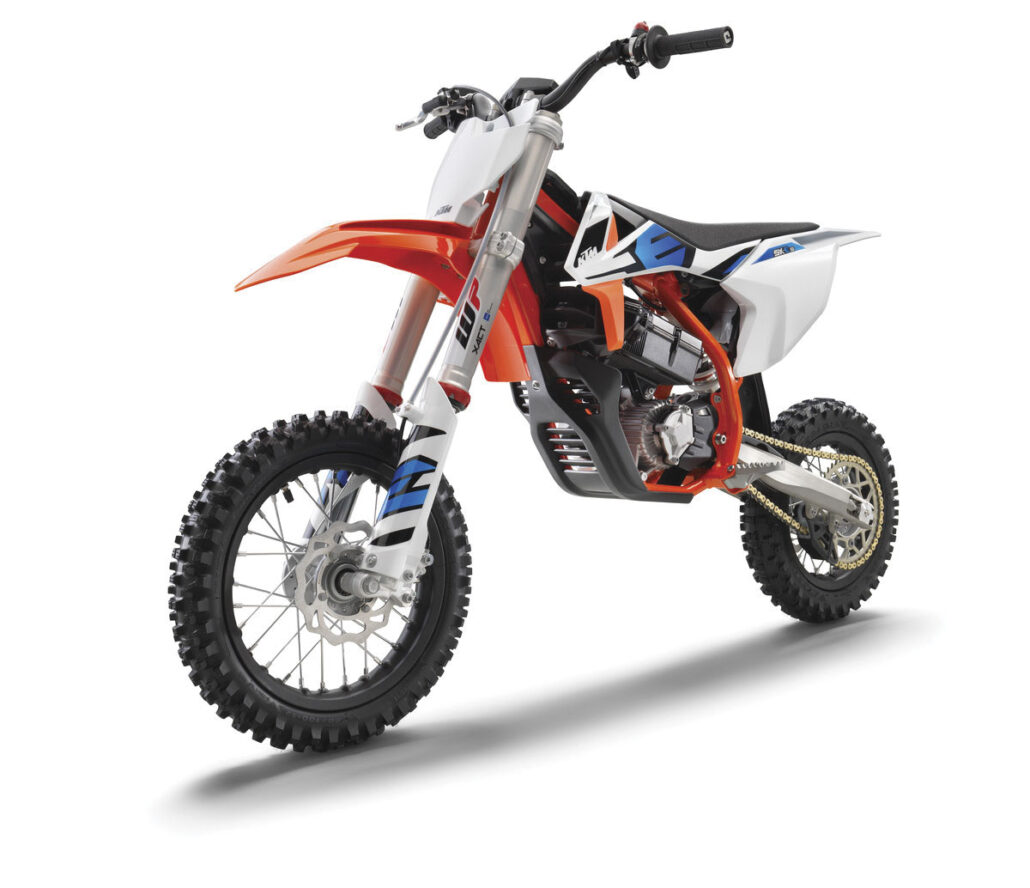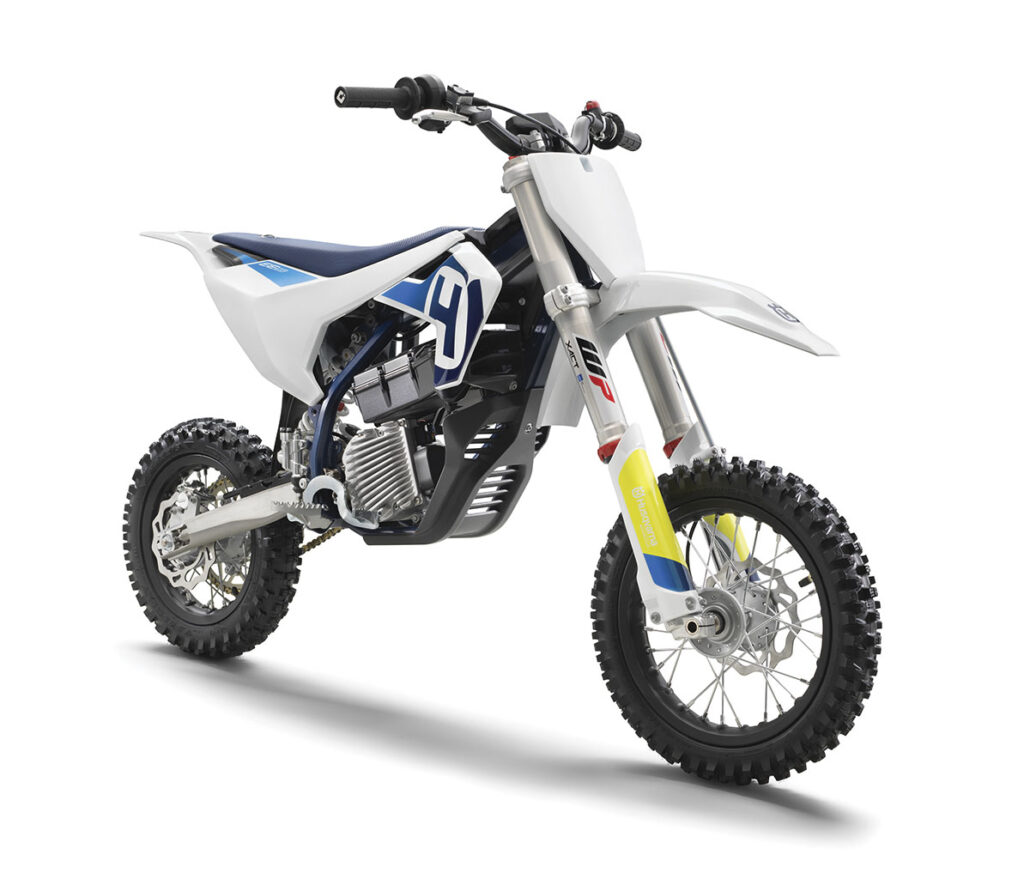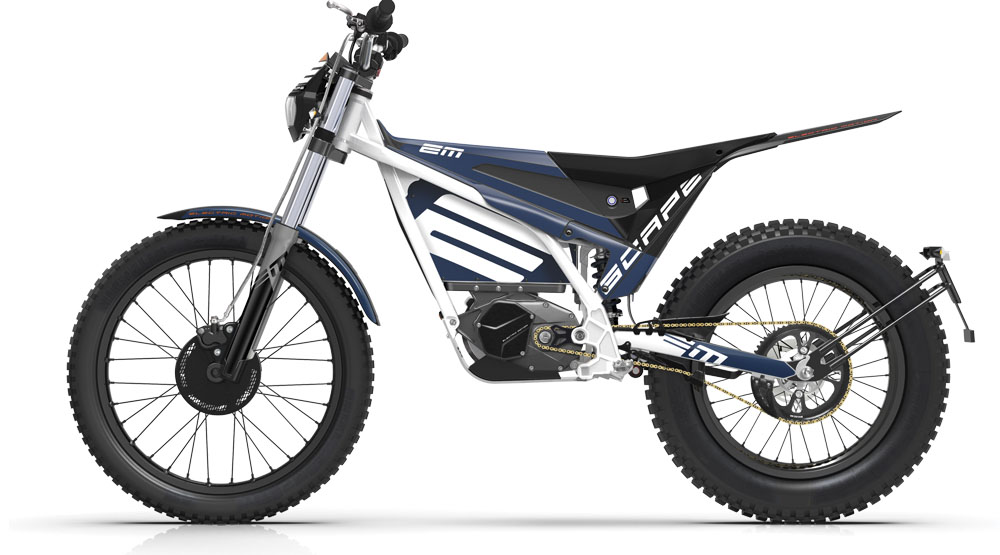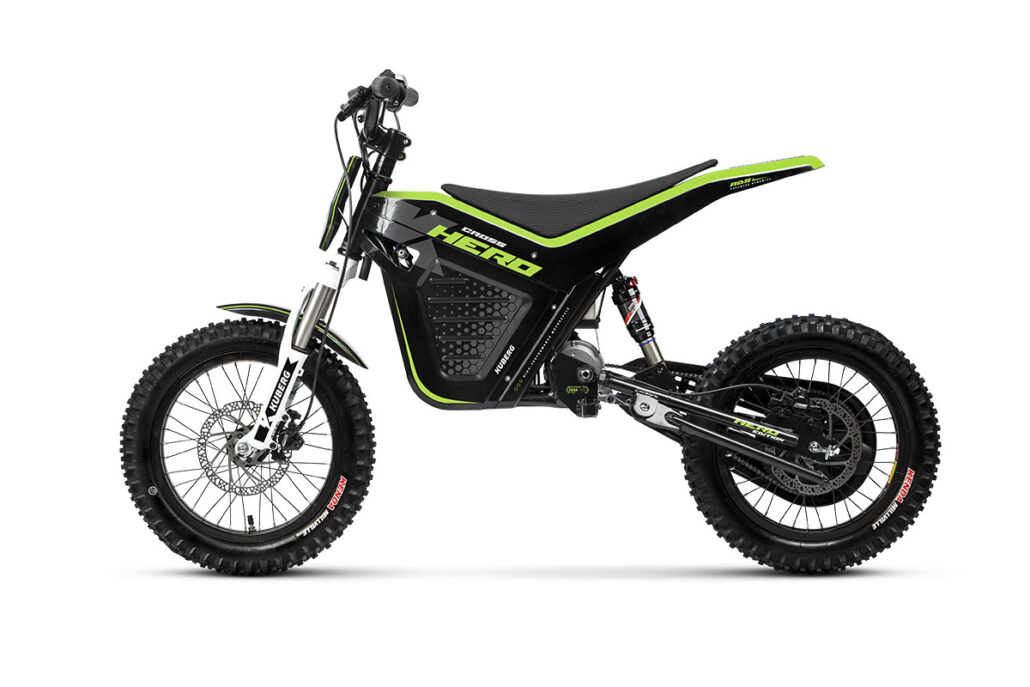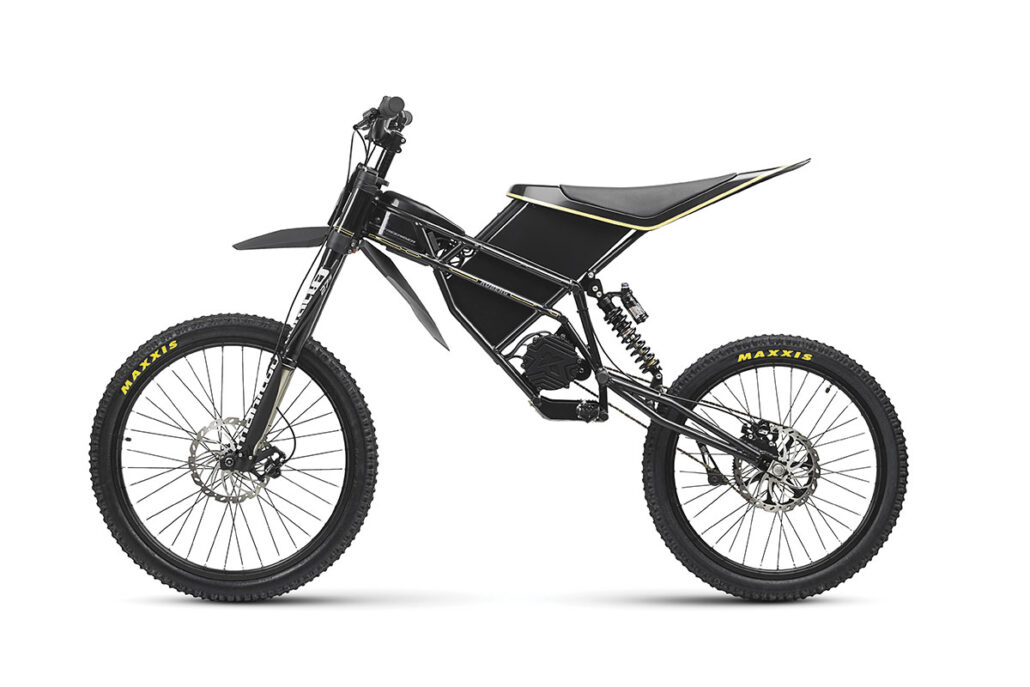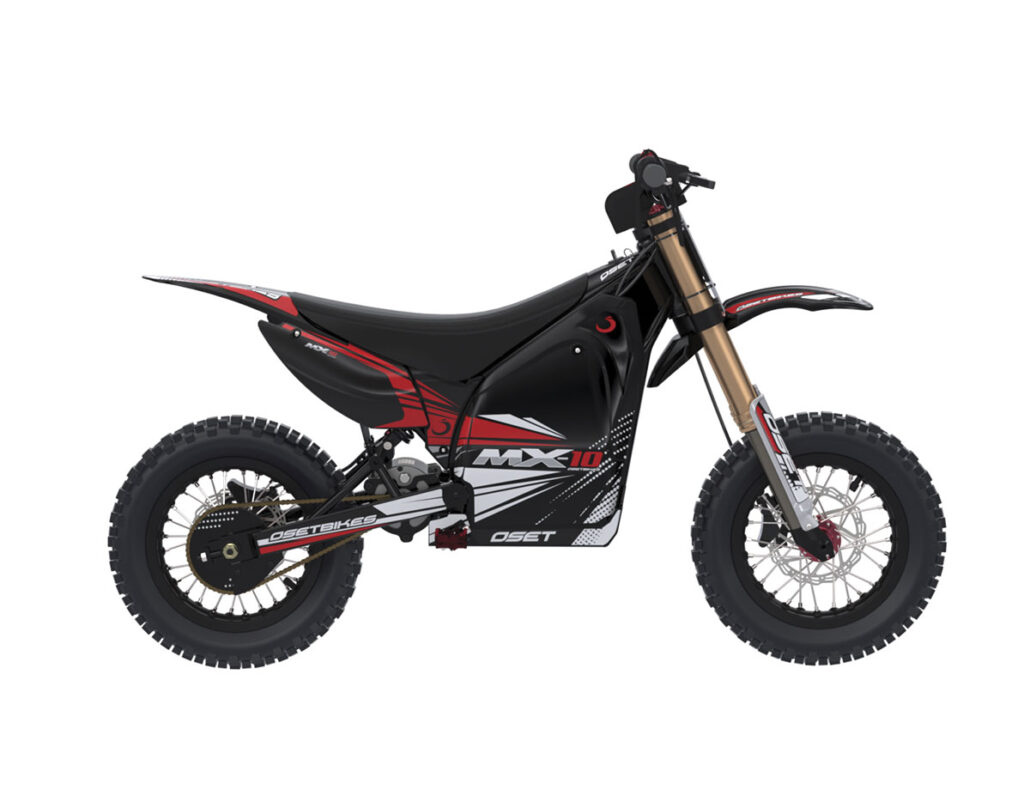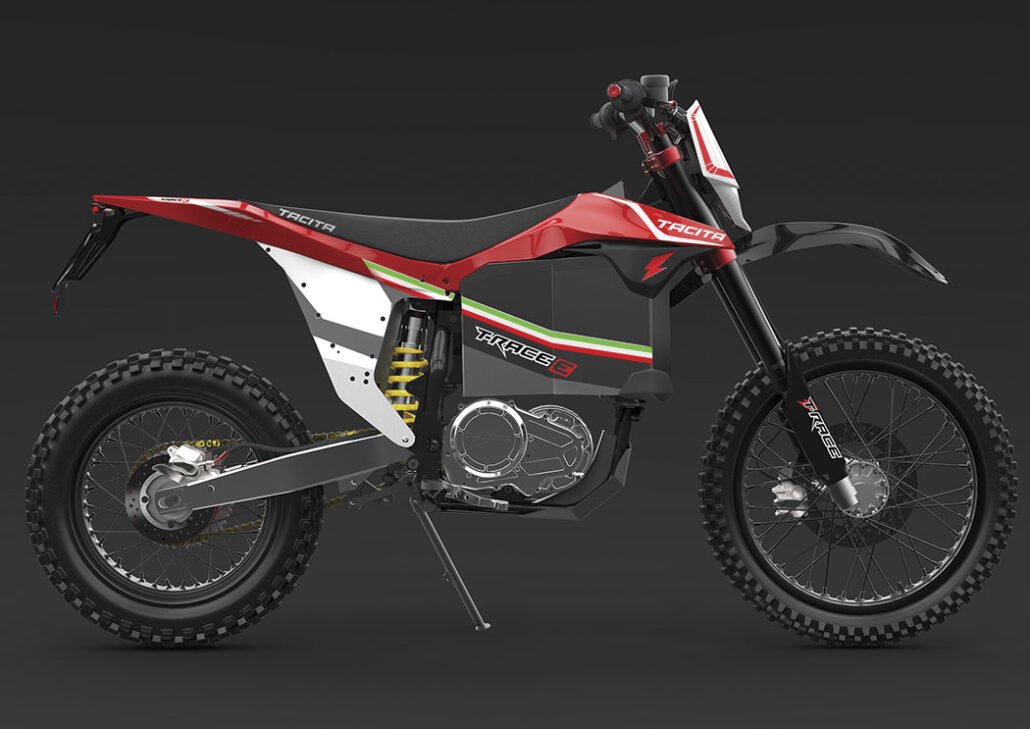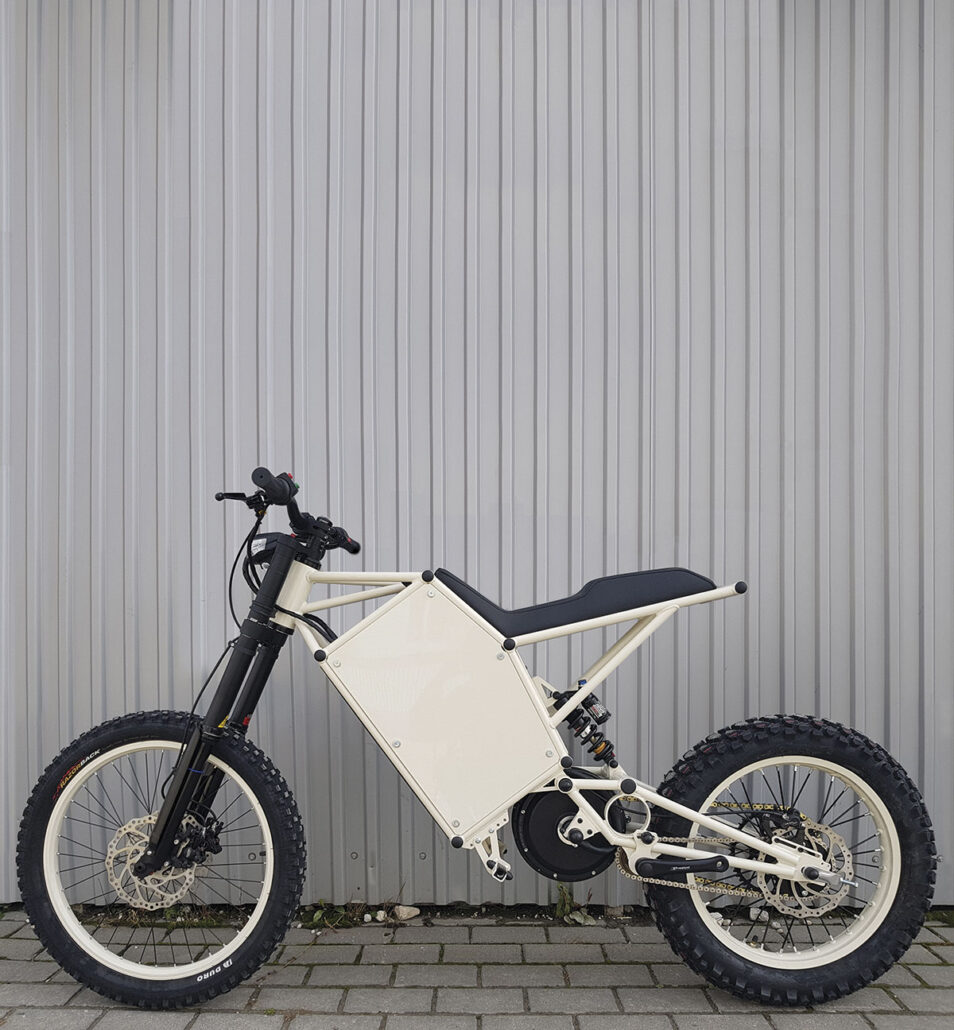AMERICAN MOTORCYCLIST June 2020
High voltage on the trails
Electric Motorcycles And Bicycles Are Changing Off-Road Riding
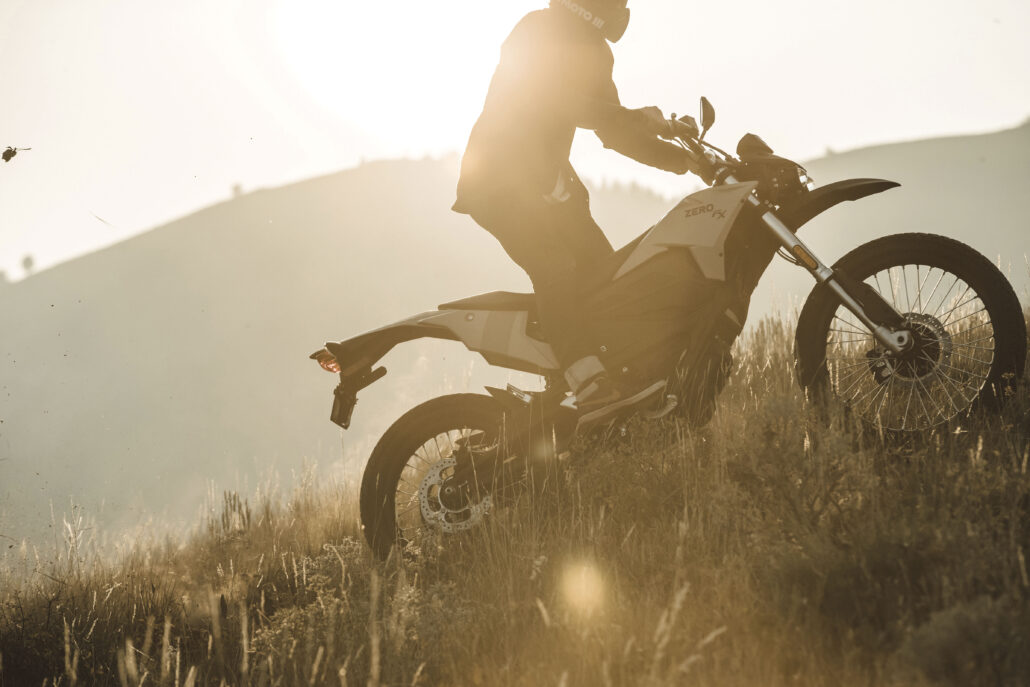
Zero FX zeromotorcycles.com Peak power: 20 kW Charging time: 5.1 hours Range: 46 miles city Tires: 90/90 x 21 front, 120/80 x 18 rear Seat height: 34.7 inches Wheelbase: 56.6 inches Weight: 247 pounds MSRP: $8,995
Electric dirt bikes are poised to revolutionize recreational riding, as well as dramatically change the public policy landscape of off-highway vehicle riding.
E-dirt bikes resolve two of the biggest objections from anti-OHV groups to motorcycles on public trails, and their easy tunability and low maintenance make getting into off-road riding much easier for many new riders.
How quickly will the riding community trade gasoline for electrons and batteries? Could electric dirt bikes spell the end of the trail for the internal combustion engine in off-road riding?
Whatever the future holds, electric motorcycle technology is advancing rapidly and presents opportunities and challenges for OHV riders throughout the nation.
What’s riding an e-dirt bike like?
One rider who can answer from ample experience is AMA Charter Life Member and former AMA Board of Directors member Perry King. The well-known actor is a lifelong motorcyclist who worked with Zero Motorcycles Inc. on promotional videos.
King said most of the time he’s spent riding Zeros has been off-road on the company’s FX model.
He described the experience as “a magic carpet ride.”
Electric motors are known for delivering instant torque, and King said the Zeros he’s ridden offer a very different riding experience from the gasoline-powered dirt bikes he’s ridden.
“It’s like a [super] hooligan bike,” he said. “It feels like a small-block V8.”
One of the biggest benefits about electric motorcycles is the lack of carburetor or fuel mapping issues when riding in high-elevation terrain. Gas-powered dirt bikes may need to run different jets or fuel settings at higher elevations. But with electric motors, this problem is non-existent.
Two other important differences King said those new to electric motorcycles will notice are how quiet they are and little maintenance they require.
He described one experience where he was able to ride side-by-side with another rider on an electric dirt bike and carry on a conversation. He also said he gets a more pleasant reaction from the pedestrians he rides past on trails. He attributes that reaction to the low sound level, which doesn’t disturb the quiet many non-motorized trail users seek.
Maintenance
As for maintenance, most wear-and-tear on an electric dirt bike impacts the tires and brakes. These reduced costs save off-road riders a lot of time and money. It’s not neccesary to rebuild your engine, replace clutch plates and more.
With the power an electric dirt bike can deliver, you may think they’re not for rookie trail riders.
King thinks the opposite. The Zeros he has ridden can be tuned using an app on a smartphone. So, if you’re new to off-road riding, you don’t need to buy a smaller bike. You can just dial back the power.
Another feature of electric bikes that King expects will help attract more riders is the lack of a clutch. Many new riders today don’t have experience driving manual-transmission cars, and the most difficult part of King’s experience instructing with car racing schools is teaching students how to use a clutch properly. A clutchless electric motorcycle removes one potential obstacle of mastering motorcycle riding.
Though an electric dirt bike’s power is easily tunable, new dirt bike riders should make sure they can get both feet flat on the ground when sitting astride an e-dirt bike before buying one.
The simple tuning and lack of a clutch also can help riders stay more focused on the riding experience.
King said one of his favorite things to do when setting up an electric dirt bike is to turn up the “regen” on the motor, which makes the battery recharging system act like a brake when he rolls off-throttle.
By eliminating the need to feather a clutch or apply the brakes as often, electric dirt bikes have allowed King to keep his focus on the trail ahead of him.
One of the downsides to owning an electric bike is the time it takes to recharge the battery. The process takes hours, and there are relatively few places to recharge an electric motorcycle along the nation’s highways, let alone along off-road trail systems.
King said the batteries on the electric dirt bikes he’s ridden have lasted for hours. And he says to not let the lack of recharging infrastructure dissuade you from giving it a try.
He compared the current situation to when the Ford Model T came out and the gas station network was not yet in place. Consumer demand for a refueling solution led to the proliferation of gas stations we have today. Something similar is likely on the horizon for electric motorcycles.
King said his enthusiasm for electric motorcycles hasn’t lessened his love of the internal-combustion engine.
“I still love gas-powered bikes, especially old Triumphs and Nortons,” he said. “But I love electric bikes as well. They are the future.”
- Peak power: 5 kW Charging time: 1.2 hours Range: 2 hours for a beginner, 25 minutes for a fast junior racer Tires: 60/100 x 12 front, 2.75 x 10 rear Seat height: 27.5 inches Wheelbase: 40.6 inches Weight: 89.3 pounds MSRP: $5,049
- Peak power: 5 kW Charging time: 1.2 hours Range: 2 hours for a beginner, 25 minutes for a serious rider Tires: 60/100 x 12 front, 2.75 x 10 rear Seat height: 26.2 inches Wheelbase: 40.6 inches Weight: 89.3 pounds MSRP: $5,149
- Peak power: 11 kW Charging time: 4.3 hours Range: 37.9 miles Rims: 1.6 x. 21 front, 2.15 x 18 rear Seat height: 32.3 inches Wheelbase: 52.2 inches Weight: 169.8 pounds MSRP: $8,500
- Peak power: 3 kW Charging time: 6 hours Range: Two hour Tires: 16 x 2.4 front and rear Seat height: 25 inches Wheelbase: 37 inches Weight: 77 pounds MSRP: $2,199.99
- Peak power: 8 kW Charging time: 2.5 hours Range: 1 hour Tires: 20 x 2.5 front and rear Seat height: 34.5 inches Wheelbase: 48.5 inches Weight: 79 pounds MSRP: $4,999.99
- Peak power: 5 kW Charging time: 3-4 hours Range: 74.6 miles Tires: 70/100-19 front and rear Seat height: 31.9 inches Wheelbase: 49.8 inches Weight: 121.3 pounds MSRP: $4,499
- Peak power: 1.4 kW Charging time: 5-6 hours Range: 2-3 hours Wheels: 10 x 1.6 front and rear Seat height: Adjustable (3 settings) 20.3 – 21.7 inches Wheelbase: 37 inches Weight: 81.99 pounds MSRP: $3,199
- Peak power: 27 kW Charging time: 1.5 to 2.5 hours to reach 80 percent Range: 69.6 miles, up to three hours Tires: 90/90-21 front, 140/80-18 rear Seat height: 38 inches Wheelbase: 58.7 inches Weight: N/A MSRP: $19,990
- Peak power: 27 kW Charging time: 1.5 to 2.5 hours to reach 80 percent Range: 69.6 miles, up to three hours Tires: 90/90-21 front, 140/80-18 rear Seat height: 38 inches Wheelbase: 58.7 inches Weight: N/A MSRP: $19,990
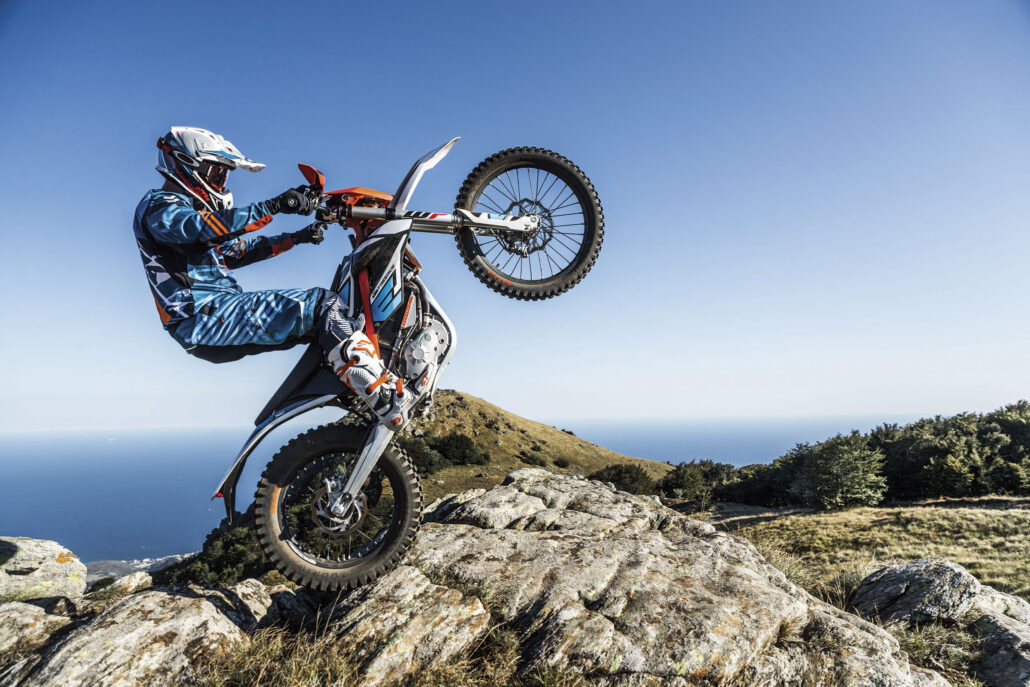
Peak power: 18 kW
Charging time: 1.3 hours
Range: 48 miles in “Cross” mode
Tires: 2.75 x 21 front, 4.00 x 18 rear
Seat height: 35.8 inches
Wheelbase: 55.8 inches
Weight: 244.7 pounds
MSRP: $10,499
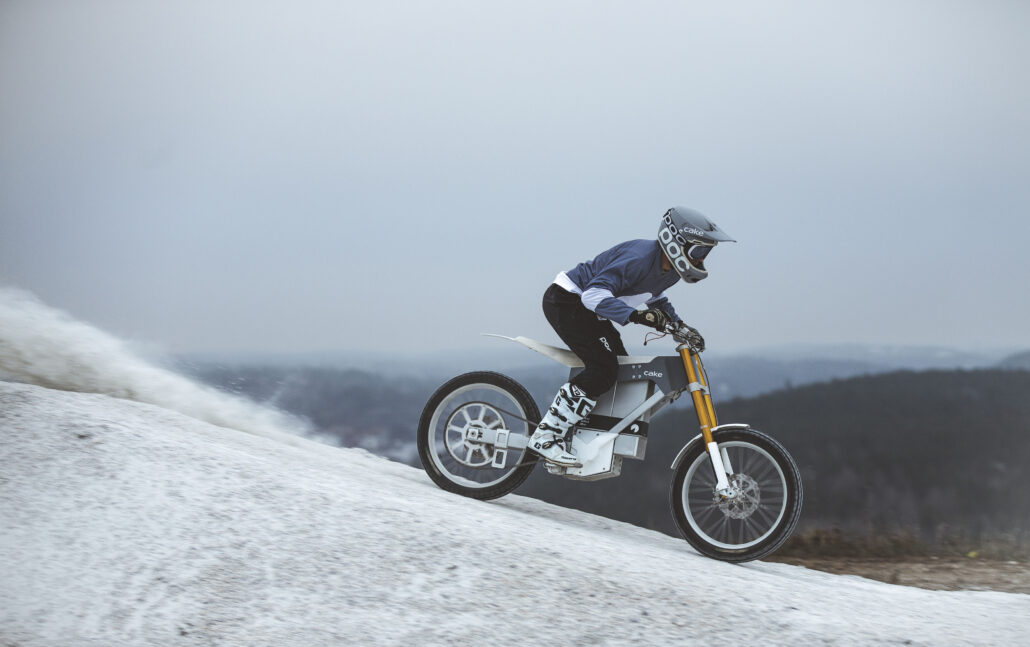
Cake Kalk OR
ridecake.com
Peak power: 11 kW
Charging time: 2.5 hours
Range: Up to three hours
Wheels: 24-inch front and rear
Seat height: 35.8 inches
Wheelbase: 51.6 inches
Weight: 152.1 pounds
MSRP: $13,000
E-bikes and OHV rights
Electric dirt bikes aren’t simply changing the riding landscape of off-road recreation, they’re also an apparent solution to several government relations problems for the off-road riding community.
The lack of an internal combustion engine and exhaust system fully address two of the problems anti-OHV groups cite most often when arguing against motorized vehicles on public trails: sound and pollution, said AMA Western States Representative Nick Haris.
With no gasoline burning inside engine cylinders to make power and no exhaust system emitting the resulting sound, electric motorcycles make very little noise and generate no point-source emissions.
“It is interesting that anti-motorized groups’ two biggest talking points, sound and emissions, are all but nullified by these vehicles. But at the end of the day those reasons were, in most cases, simply a convenient means to an end,” Haris cautioned, because many anti-access groups are against any type of motorized vehicles.
The lack of exhaust notes and emissions may do more than help with advocacy in the traditional government relations arenas. They also could open up areas to OHV use that would have been difficult or impossible to open in the past.
Think about urban OHV parks, which the AMA has advocated for in cities across the nation.
Opponents of such parks will have fewer reasons to oppose their creation.
“I do think it would be interesting if a truly electric-only park was proposed for an area where traditional OHV use would simply not be feasible,” Haris said.
OHV parks have been proposed for Philadelphia, Cleveland, San Diego, Baltimore and other large cities to help alleviate the illegal riding of dirt bikes and ATVs on city streets and in public parks.
Trail funding affected
Though electric dirt bikes solve some problems, they challenge the current funding scheme for public trails.
Much of the funding for trail maintenance and development comes from fuel taxes, including money channeled to states through the federal Recreational Trails Program.
Electric motorcycles do not use gasoline, which means another method of generating contributions toward trail construction and maintenance will need to be identified and tapped.
There’s also a chance that the quiet and pollution-free attributes of electric dirt bikes could work against the use of gasoline-powered dirt bikes.
Haris said public land managers or government bodies could begin adopting ordinances that would effectively ban the use of internal-combustion engine-equipped dirt bikes to force OHV riders to begin using electric motorcycles.
“A managing agency could implement a sound ordinance or similar restriction that only an electric vehicle can meet,” he said.
Increasingly, electric bikes are changing the future of motorcycling, offering a very different riding experience and challenging the administrative status quo. And the AMA will continue working for responsible recreational access to public lands for off-highway vehicles.
Electric bikes appear to be part of the future of motorcycling, offering riders a very different riding experience and challenging the administrative status quo. And the AMA will continue working for responsible recreational access to public lands for off-highway vehicles.
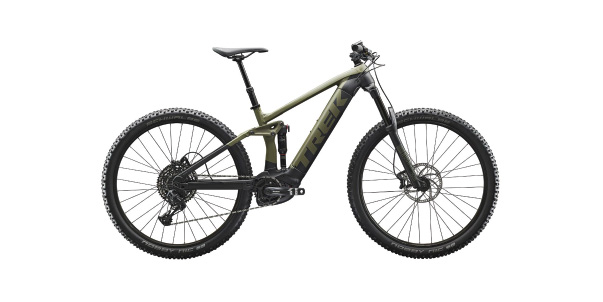
Trek Bicycle
Giving electric mountain bikes a try
A motorcyclist’s guide to eMTBs
Motorcycles aren’t the only single-track vehicles that electric motor technology is changing. The advent of the electric mountain bike, sometimes called an eMTB, is revolutionizing the bicycling.
However, the advancements in eMTB technology are moving a lot faster than policymakers and government agencies can keep up with.
Classes of eMTBs
E-bicycles are commonly divided into three classes.
Class 1 e-bicycles feature a pedal-assisted electric motor that supplements the rider’s pedaling up to 20 mph.
Class 2 e-bicycles also offer pedal-assisted power up to 20 mph, as well as a thumb-actuated throttle that allows the rider to power the bike with just the electric motor.
Class 3 e-bicycles are similar to Class 1 bikes, in that they only offer pedal-assist power from the electric motor. The difference is a Class 3 machine provides pedal-assisted power up to 28 mph.
Public policy and e-bicycles
E-bicycles have created a bit of a public-policy quagmire. They don’t fit neatly into either the nonmotorized bicycle or the motorized dirt bike categories, which has resulted in wide variation in federal and state laws and regulations on e-bike use.
In August 2019, the National Park Service ruled all classes e-bicycle classes could use nonmotorized trails in national parks. On land managed by the U.S. Bureau of Land Management, e-bicycles are allowed only on motorized trails.
At the state level, a wide range of policies for e-bikes has been adopted.
If you’re planning to ride an e-bicycle, be sure to check the applicable laws and regulations in advance.

